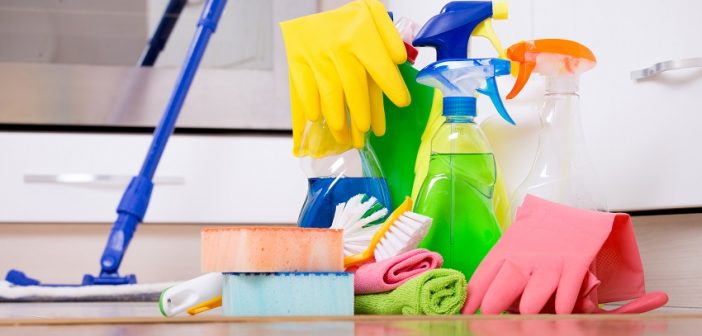Mold grows anywhere, either on your wall, toys, books, or clothes. Whether it is warm or cold weather, home activities, or humid summer, they can cause moisture and mold growth indoors. It can turn your valuable assets into musty leftovers and also has health impacts.
Definition of Mold
A mold is a fungus form available in different types such as Aspergillus Cladosporium and Penicillium. Molds produce spores that spread by air around them. They grow both indoors and outdoors. The spores are available in all indoor surroundings, and there is no practical way to prevent them.
Molds spores grow well in moist and warm environments. It means when they land on damp spots; they start to grow. Molds also grow on different surfaces, including glass, wood, plastic, and fabric. During their growth, they consume the surface they are growing on.
How do Molds Enter the House?
Mold spores are available in any surrounding, either indoors or outdoors, but they are invisible to our eyes. The spores can get into your house through the air using ventilation systems, open doorways, and windows or by attaching to people and objects like shoes and clothing. Molds only blossom when they land somewhere with an ideal growth condition that supplies necessary nutrients and moisture. Molds often appear in places like:
- Flooded or leaking areas
- Windows with condensation buildups
- Behind closets where air doesn’t circulate
Molds and Health
Molds have health impacts, especially on people with weak immune systems, allergies, and respiratory problems. If you are wondering how molds affects your health, below are health concerns resulting from molds.
1. Breathing problems
When molds grow indoors, they produce spores, fragments, cells, and other organic elements that float in the air. They later produce irritants, mycotoxins, and allergens that are toxic to sensitive people.
Dampness also causes materials breakdown leading to increased particles and dust volume in the air. These particles and mold spores are irritating to your nose, lungs, and throat, especially if you already have breathing concerns, chronic lung conditions, or asthma.
2. Allergy
Any person with mold-related particle allergy or sensitivity may react to it. Mold allergies have symptoms similar to other allergies like seasonal allergies or hay fever. Some allergic symptoms resulting from mold spores include:
- Itchy nose
- Sneezing
- Watery eyes
- Running or blocked nose
If you have a mold allergy and asthma, chances are you may experience an asthma attack if your environment is filled with molds.
3. Pulmonary Hemorrhage
Pulmonary hemorrhage (lung bleeding) results from exposure to a mold known as mycotoxins. The condition mainly occurs in children and may become fatal if exposed regularly to the fungus without preventive measures.
Symptoms of pulmonary hemorrhage
- Blood vessels weakness
- Physical trauma
- Lung tumors
- Infections like tuberculosis, pneumonia, and cystic fibrosis
- Congenital lung malformation
Aspergillosis
Aspergillus, a type of mold, can cause some individuals a severe health condition known as Aspergillosis. While a more significant percentage of people can inhale Aspergillus spores and still be okay, those with weakened immune systems or lung diseases may experience a severe reaction. There are varied types of Aspergillosis, including:
- Allergic Aspergillus sinusitis: its symptoms include severe headache and nose infection
- Chronic pulmonary Aspergillosis: it causes breathing problems, weight loss, and cough
- Allergic bronchopulmonary Aspergillosis (ABPA): causes breathing difficulties and lung problems.
- Fungus ball or Aspergilloma: its symptoms include breathing difficulties and cough-producing bloodstains.
Other Health Concerns
Molds can influence the production of bacteria and microbes. Coming into contact with these bacteria may cause an inflammatory response in some people. Molds also increase fungal and bronchial infections risks. World Health Organization evidence prove molds can cause:
- Allergic alveolitis
- Chronic rhinosinusitis
- Bronchitis
- Allergic fungal sinusitis
- Hypersensitivity pneumonitis
Center for Disease Control and Prevention and WHO evidenceTrusted Source proves that most people have had the following symptoms after staying in a mold build environment:
- Fever
- Wheezing
- Sick-building syndrome
- Nausea
- Headache
- Eye and skin irritation
- Insomnia
How to Get Rid of Indoor Mold
The best way to eliminate molds from your home is to prevent their growth. Also, ensure you keep your home well ventilated and clean. Some of the things that cause moisture in your house include:
- Leaking water
- People and pets breathe
- Air moisture, especially on a humid or rainy day
- Washing and cooking water
- Living in a tightly sealed building
Some of the ways to prevent indoor mold growth
1. Reduce humidity
You can reduce the risks of moisture and mold build up in your house by:
- Leaving your windows open to enable air to circulate freely
- Taking quick measures in case of a spillage or leak
- Reducing indoor humidity using a dehumidifier
- Drying all fabrics thoroughly before storing them
- Avoid indoor activities such as using kerosene heaters and drying clothes that produce moisture
- Using an extractor fan to get rid of moisture after cooking
- Avoid placing carpets on basements and bathroom
2. Eliminate Mold
To remove or clean indoor molds, ensure you:
- Wipe hard surfaces: use the right commercial products or concentrated bleaching solutions, soap, and water. Remember to dry clean the surface to prevent mold reappearance.
- Call a professional: if molds have infested a large area, the best way to handle them is to hire a professional.
- Wipe or wash porous surfaces: often check to see the reappearance of mold as they can penetrate through porous surfaces. If you get cases of common molds reappearing, consider disposing of the items away.
- Get help from a local hardware store: many anti-fungal products and paints effectively prevent the development of molds.
- Consult a doctor: If your health is deteriorating due to molds, visit your doctor for medical help.
Many items help eliminate molds, and you can either purchase them in stores or online. They include cleaning products, dehumidifiers, and humidity gauges.
Final Take
All indoor backgrounds have mold spores but are not infectious. However, people with weak immune systems and prior respiratory concerns are at a high risk of getting affected by mold spores or getting an allergic reaction. To prevent mold development, ensure you keep your indoor space clean, adequately ventilated, and dry.



Very interesting and useful information, thank you! Nowadays there are a lot of ways how you can improve your health at home. I’ve been having sleeping issues, and not a long time ago, and I found out about the weighted blanket. You can click for info about it, and if you have some mental problems, try it.